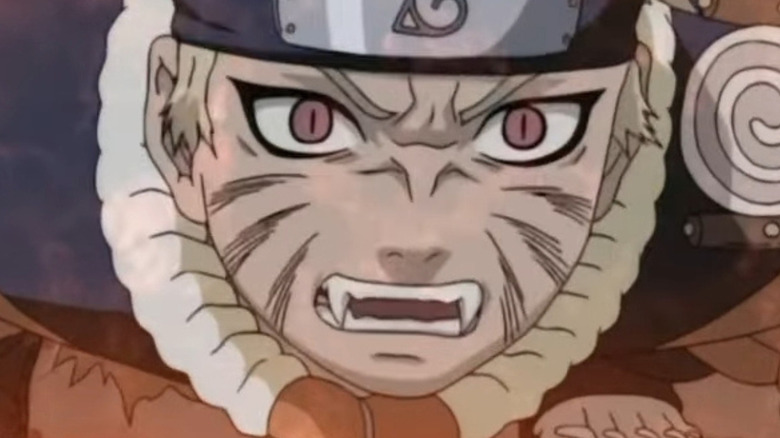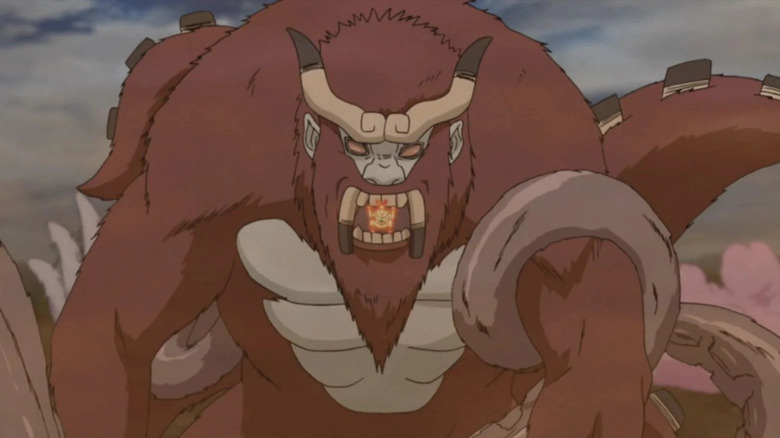Naruto's Four-Tailed Beast Sports Too Many Dragon Ball Connections To Be A Coincidence
It is relatively known among the anime and manga community that manga artists — or mangaka (漫画家) in Japanese — take inspiration from each other all the time. For fans of the genre, it is interesting to see the domino effect of inspiration that can happen in the manga industry. For instance, Yoshihiro Togashi's "Yu Yu Hakusho" (1990) inspired certain aspects Tite Kubo's "Bleach" (2001) as fans often compare the two, and in turn, "Bleach" would later influence "Jujutsu Kaisen" (2018) creator Gege Akutami to come up with his own shonen series (per Comicbook).
Considering its immense popularity, which has endured for decades until the present day, it is unsurprising that Akira Toriyama's "Dragon Ball" provided inspiration to many manga artists who emerged thereafter. In fact, two of the most popular manga and anime, Masashi Kishimoto's "Naruto" and Eiichiro Oda's "One Piece," drew inspiration from it. Both, interestingly, also made references to one another's work in their respective manga (via AnimeNewsNetwork).
Two characters in "Naruto" that are clearly telling of Kishimoto's admiration for "Dragon Ball" — so much so that they can almost be called a tribute — are the four-tailed beast (Yonbi) Son Gokū and his jinchūriki, Roshi of the Hidden Stone village.
Kishimoto's love letter to Dragon Ball
As a fan of "Dragon Ball", having even redesigned the cover of its eleventh volume in commemoration of the series' 40th anniversary, Kishimoto left quite a few "Dragon Ball" Easter eggs in his work. Perhaps one of the least well-hidden is the tailed beast Son Gokū and his host Roshi. Starting off with the most obvious connection, these two are named after the popular protagonist from "Dragon Ball" and his sensei, Master Roshi.
In addition, the monkey-like Son Gokū's design also took inspiration from Ōzaru, also known as the Great Ape form transformation. Furthermore, the fact that the beast's number of tails is four is also an allusion to Gokū's four-star dragon ball. Both Kishimoto's and Toriyama's Son Gokū have their origins in the Chinese mythical creature Sun Wukong, also referred to as the "Monkey King", which appears most notoriously in the 16th-century Chinese novel "Journey to the West."
A fan going by NBcraft24 online wrote an explanation of what influenced what, making use of a clever color analogy. They explained how blue (Sun Wukong) emerged first, Toriyama made green from blue (Dragon Ball) and Kishimoto made yellow (Naruto) by mainly focusing on Toriyama's green.
For all the people they entertained and inspired over the years, both mangaka will forever have the respect and appreciation of thousands of fans.

